Our visit to Cambodia was quite short, just little more than a week. We were only there to see and experience its most popular tourist attractions. In Phnom Penh that’s S-21 and the Killing Fields, in Siem Reap the Angkor Archeological Park, a UNESCO World Heritage Site. This blogpost is our Angkor Wat Itinerary, which can hopefully help you plan your visit to Angkor. At the end of this post we’ll list up our personal favourites of our three day exploration of Angkor and some tips for a great visit.
The Angkor complex, with its numerous temples, stretches over 400 square kilometers. It’s huge, and unlike some people think absolutely not possible to explore on foot. It consists of the impressive remains of the different capitals of the Khmer Empire from the 9th to the 15th century. The park is inhabited: you’ll see villages, schools, rice fields, restaurants and souvenir shops scattered over the area.
We decided to spend three days exploring Angkor. Brecht did the planning based on information he found on the internet: which are the most popular, must-see temples, what is possible in a day and how to get around. We like the freedom of exploring things on our own pace, without a guide. Besides, it doesn’t really fit in our budget to hire one, so we didn’t, unlike lots of other people. I’m sure they can tell you interesting things about everything there is to see in Angkor, but if you like, you can buy a guidebook or read up about the different temples on the internet.
So without further ado, our Angkor Wat Itinerary:
Angkor Wat Itinerary – Day 0
If you buy your entrance ticket between 17h and 17h30, you can go see the sunset that day for free. A valuable tip we took to heart. So at about 16h we went over to the Green e-Bike Shop near our guesthouse to rent an e-bike. It’s an eco-friendly way to visit Angkor, which helps preserve this important archeological site. Half an hour later, after some paperwork, explanation about the bike and tips about Angkor, we took off. We paid $10 each for 24 hours of e-bike fun and got a free map of Angkor. Note that the e-bike can only hold one person, they recommend a maximum speed of 20 km/h, and there are free charging points at Angkor.
We were practically alone at the Angkor Ticket Office, so no waiting time. Quite the opposite to when you buy your ticket in the morning, as we noticed the following morning. Do make sure you have a good hair day, as they take your picture and print it on your ticket. A 3 day pass allows you to enter the Angkor Archeological Park for 3 days in the next week. It doesn’t have to be 3 consecutive days, so we went for 2 days and took a 1 day break at the swimming pool before we entered the park for the last time. In 2015 we paid $40 per person for a 3 day ticket, but since 2017 it will cost you $62 per person.
You can’t reach Angkor Wat itself by bike, so we locked them up outside of the moat and continued on foot. Before crossing the moat they’ll ask you for your entrance ticket, just like at almost every other temple at Angkor, so don’t put it away in the bottom of your backpack. I believe we arrived somewhere between 17h30 and 17h45 at the Angkor Wat (Perfect) Photo Spot. The weather was not perfect, but nevertheless we took some beautiful pictures.
Angkor Wat Itinerary – Day 1
Transportation: e-bike
Price transportation: $20 (for 2 e-bikes for 24h, already made use of them on day 0)
Length of our day: almost 9 hours
Angkor Wat
We decided against fighting the crowds at sunrise and woke up at 7h15. We filled our backpack with some cookies and water and were on our way by 7h45 to do the so called “Little Tour” of Angkor. It’s about half an hour from Siem Reap Holiday Garden, our guesthouse, to Angkor Wat, so we arrived at the moat at about 8h15. We locked up our e-bikes, ate an expensive, but good croissant at one of the stalls and started up our audio guide before crossing the moat. (Brecht bought the audio guide/ebook in the App Store for $8.99).
Angkor Wat is a huge, stunning and very photogenic Hindu temple. It is believed it was also built as a mausoleum for King Suryavarman II. We were glad having the audio guide telling us about the mythological stories and historic events depicted in the bas relief galleries. You can climb the central tower of Angkor Wat for a (probably) spectacular view, but the queue for the climb was ginormous, so we passed.
Srah Srang and Banteay Kdei
More and more people were arriving at Angkor Wat and we felt we had seen and captured it’s beauty, so we drove over to the Green e-Bike Free Charge Point (a restaurant) to charge our e-bikes. We walked back to Banteay Kdei alongside Srah Srang, a reservoir (= Srah) built for religious or agricultural reasons, or maybe a combination of both. Banteay Kdei, meaning “A Citadel of Chambers”, is a Buddhist temple. After a short exploration, we walked back to the charging point/restaurant for lunch.
Ta Prohm
After lunch, we drove over to Ta Prohm, known for a scene in the movie “Lara Croft: Tomb Raider”. The Buddhist temple, dedicated to the mother of King Jayavarman VII, is left uncleared of trees. The jungle is taking over the temple, which makes for a beautiful and unique sight. It’s one of the largest and most popular temples in Angkor.
Ta Keo
Ta Keo is an unfinished Hindu temple-mountain. Some say a lightning strike was perceived as a warning to not continue, others believe the death of Jayavarman V is a more plausible explanation. You can climb the steps to the top for nice view.
Bayon
The Bayon is the center of Angkor Thom, the last and most enduring capital city of the Khmer Empire. Angkor Thom, literally meaning “big city”, is enclosed by massive walls with gates at each of the cardinal points. In the east there’s an extra gate, the “Victory Gate”, leading directly to the Royal Palace. Each gate is made of a massive gopura with huge faces. The causeways entering the city are flanked by demons (asuras) on the right and gods (devas) on the left, both holding a huge snake (naga). This represents the myth of the Churning of the Ocean of Milk.
The Bayon itself is easily recognisable and well known because of the hundreds of massive smiling faces carved in the numerous towers. Who exactly is being depicted in this giant stone faces is still up for debate. This Buddhist monument is also known for its bas relief galleries and has, just like Angkor, a beer named after it. The Bayon can be visited riding elephants, but we refuse to support this “tourist attraction” for the sake of the elephants. We love the photo taken at the Bayon (Perfect) Photo Spot. Brecht “discovered” this spot by chance when we were passing it by on day 2.
We took a break across from Elephants Terrace, a terrace decorated with elephants. The platform was probably used by the King Jayavarman VII to view his victorious armies returning. We had a refreshing ice popsicle ($1.25) while admiring this terrace.
Baphuon
The last temple we visited on day 1 was the Baphuon. A long raised causeway leads to this Hindu temple. A massive reclining Buddha was added to the temple later on, when it was reused as a Buddhist monument.
We had to return our e-bikes before 16h30, so we had no choice but to end our first day of exploring Angkor. To be honest, it was a long warm day and we were tired anyway.
Angkor Wat Itinerary – Day 2
Transportation: tuk tuk
Price transportation: $16 (including tip)
Length of our day: almost 5 hours
Prasat Kravan
By 8h15 we had finished our breakfast for $1 each (right around the corner of our guesthouse), and arranged a tuk tuk to drive us around at Angkor today. We paid him $16 (including tip) to take us on the so called “Big Tour” of Angkor. First stop: Prasat Kravan. Prasat is a Khmer and Thai term meaning castle, palace, or temple. Prasat Kravan is a small Hindu temple with bas reliefs carved in the brick walls of the middle tower. It looks as though the bricks were glued together, because they didn’t use mortar, but a vegetable compound. The towers were restored in the 1960’s, adding some bricks marked “CA”, meaning “Conservation Angkor”. We searched, but didn’t find any of those. We read you could spot the occasional frog fishing in the nearby pont, but again no luck.
Prasat Pre Rup
Prasat Pre Rup, meaning “turning the body”, is a Hindu temple-mountain, believed to be used for funerals. If you dare climb the steep steps, you will be rewarded with a nice 360° view over the surrounding forest. The descent is worse than the climb, so Brecht had to be patient while I was slowly coming down step by step. Other temples were very crowded, but this one seems less popular, although beautiful.
Eastern Mebon
Eastern Mebon (or East Mebon) is a Hindu temple which was once surrounded by water. It could only be accessed by boat, so landing stages replace gateways at the cardinal points. The temple is known for the massive elephant statues guarding the corners of two out of three stories.
Ta Som
Ta Som is a small Buddhist temple, overgrown by trees and other vegetation. Especially the eastern gopura, covered in tree roots, is popular with photographing tourists.
Neak Pean
To get to Neak Pean, a small Buddhist temple on an artificial island, you have to cross the lake surrounding it. I have no words to describe the view over that lake, I’ll let the photos speak for themselves.
We crossed over the long wooden walkway, but you can also take a boat like they did when this temple was in use. The temple sits in the middle of the central pond, surrounded by another four ponds. They believed the holy water in those ponds could cure its bathers by balancing the elements in them.
Preah Khan
Preah Khan is believed to have been a Buddhist temple and university, housing 1,000 teachers. It has numerous trees and other vegetation growing among its ruins, similar to Ta Prohm. The entrances, located at the cardinal points, all have causeways flanked with demons and gods holding a huge snake, similar to Angkor Thom but smaller and less well preserved.
Baksei Chamkrong
Baksei Chamkrong is a small Hindu temple, just outside of the south gate of Angkor Thom. You have to climb the steep stairs to the top of the pyramid temple to see the well preserved inscriptions. The temple is not at all popular with visitors of Angkor, so you can have some peace and quiet, away from the crowds. Perfect to end our second day of exploring Angkor.
On the way back, between Baksei Chamkrong and Angkor Wat, there were a lot of monkeys on the side of the road. The tuk tuk driver, having some experience with tourists, pulled up so we could take pictures. When Brecht got out of the tuk tuk, a monkey took his place. He was watching me and showed his sharp teeth when I looked back at him. I wasn’t feeling at ease to say the least. I clung to our bags, scared the monkey would try and steal them. Had to try a little smile for the picture as well though.
I immediately got out of the tuk tuk, but the monkey wouldn’t. Guess he had to be somewhere. After some clapping and “ksssh-ing” by the driver, he finally took off. Phew, we could continue with all our stuff and without any bites.
Angkor Wat Itinerary – Day Off
After two days of exploring Angkor, it was time to take a day off to relax by the pool. Unfortunately our guesthouse didn’t have one. Luckily Brecht found some hotels who let you use their swimming pool for free when you lunch at their restaurant. So that’s what we did! We headed over to Franginpani Villa, excited about the relaxing day ahead of us. The staff was friendly, the food was good and there’s even a shower (and toilet) near the pool.
Angkor Wat Itinerary – Day 3
Transportation: tuk tuk
Price transportation: $25
Length of our day: almost 6 hours
Banteay Srei
All relaxed and well rested after our day at the pool, we started our third and last day of exploring Angkor. After more than an hour in the tuk tuk, we arrived at Banteay Srei, situated north of Angkor Archeological Park. This Hindu temple called “Citadel of Women”, is known for its amazingly detailed carvings. It’s said it can only have been built by women, as no man could create something so beautiful with so much detail.
The site is well organized, with a (paid) car park, clean toilet, restaurants and a whole village of souvenir shops. Before ending up at the temple, we walked along the road leading you to a point where you can take a boat. We passed some nice viewpoints looking out over a little lake. You’ll see the temple on your left, behind some trees. Outside of the walls, there’s a platform which gives an overview over the temple.
Kbal Spean
Our second and last stop on day 3 (and therefore the last of our 3 day exploration of Angkor) was Kbal Spean. This is not a temple for a change, but carvings in the river bed and banks up amid the jungle. To be honest, we didn’t pay much attention to the carvings, as we were looking for the waterfall. After a disappointingly tiny waterfall at the top, we found the real one by following the river down. I wouldn’t call the waterfall impressive, but it was nice.
A 1500m long trail leads through the jungle and over boulders, up to the carvings and waterfall at the top. It’s a nice path, covered in the shadows of the surrounding trees, so you don’t have to hike/climb in the scalding hot sun. There are stairs at extremely steep points and short cuts around the “rock climbing” parts, but also flat parts to catch your breath. Perfect for a fun 30 to 45 minutes hike, we liked it! More than what we found at the top, so if you don’t like hiking, don’t bother.
If you do go, don’t forget to bring water, because although the path is mostly covered in shadow, it’s still hot. Halfway up there’s a shelter where we took a short break. I was glad I was wearing my sport shoes and not my sandals, but I guess you should wear whatever you’re comfortable in. We saw people in cute little sandals, hiking sandals, flip-flops and even barefoot.
We were pleased with our decision to take a tuk tuk, because you can enjoy the countryside you cross on this long trip to the temple and waterfall. Brecht even did a little nap on the way back. The road is quite bumpy at times, but we’ve had worse.
Our Angkor Wat Tips
To round up our 3 day Angkor Wat Itinerary, some tips for a great visit to Angkor Wat:
Favourite temples
- Day 0: Angkor Wat
- Day 1: Ta Phrom
- Day 2: Neak Pean
- Day 3: Banteay Srei
Tips
- Do your homework, read up a bit on the temples you want to visit and save the money you would have paid for a guide
- Buy your ticket between 17h and 17h30 and enjoy a free sunset (at Angkor Wat)
- Buy a 3 day ticket, it’s perfect to see the most popular temples (and more) without rushing
- Add a day off in between, preferably relaxing by the pool
- Keep your ticket at hand, as they ask it before entering most of the temples
- Bring water and a snack (there are drink a food stalls everywhere, but it’s hot and you’ll need a lot of water)
- Dress appropriately, you are visiting temples
- Try an e-bike, it’s a fun and eco-friendly way to explore the temples
- Prepare to be amazed! Enjoy!

Like it? Pin it!
Did you find this post helpful? Help us spread the word by sharing this post or pinning the following image.


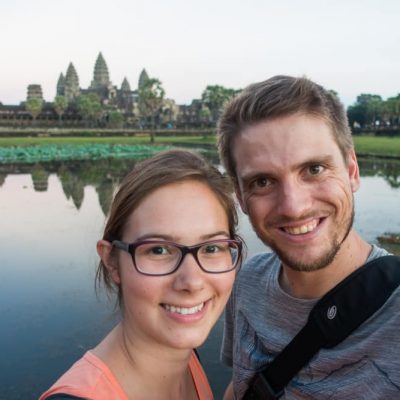

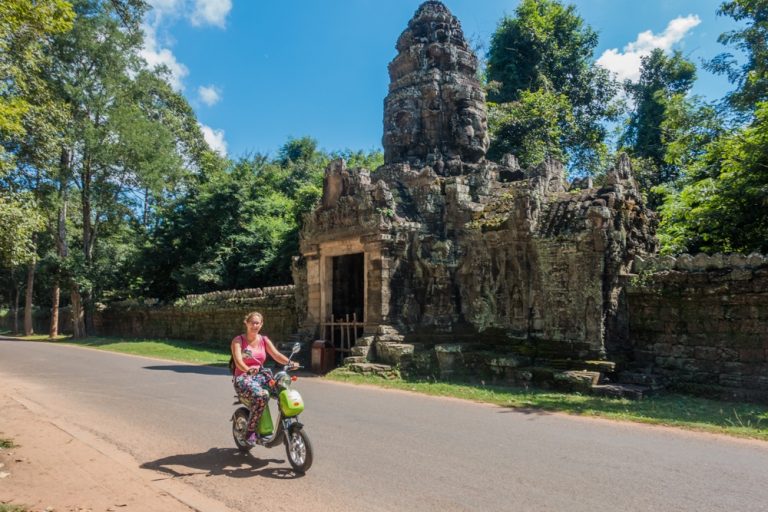
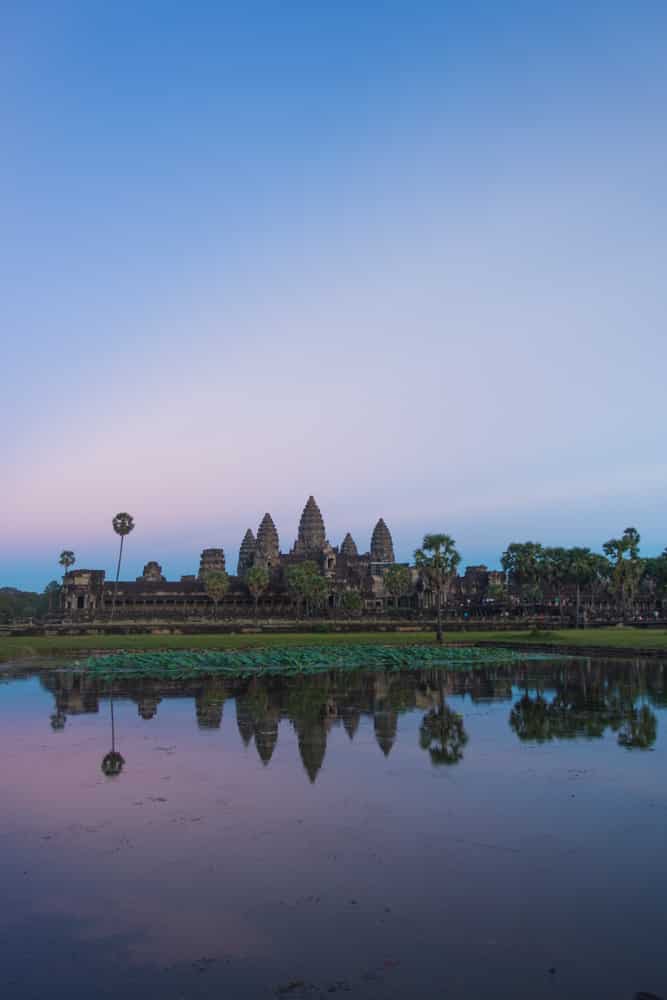

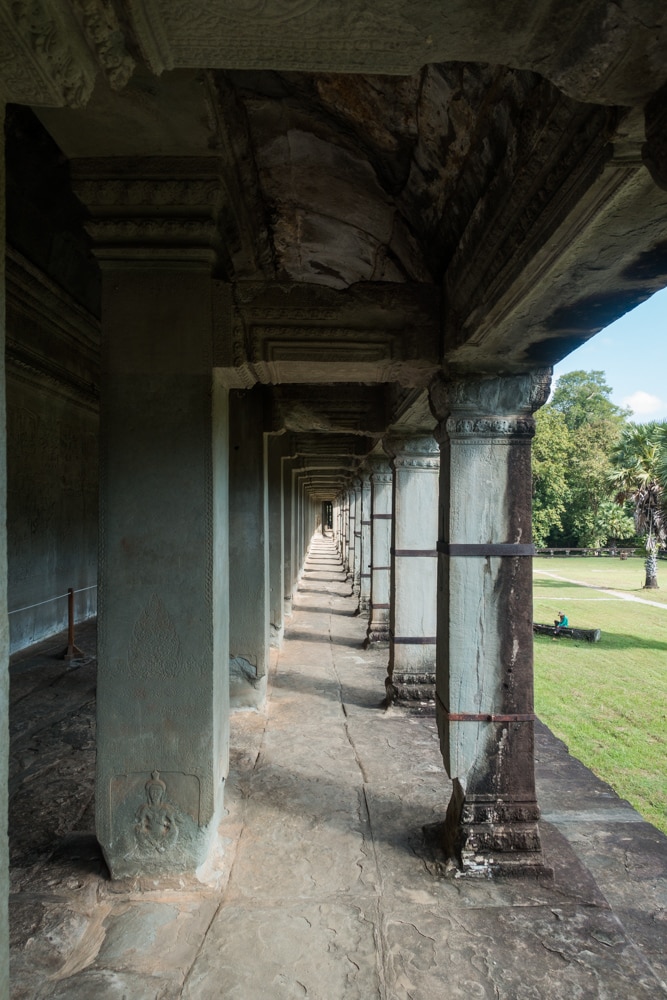


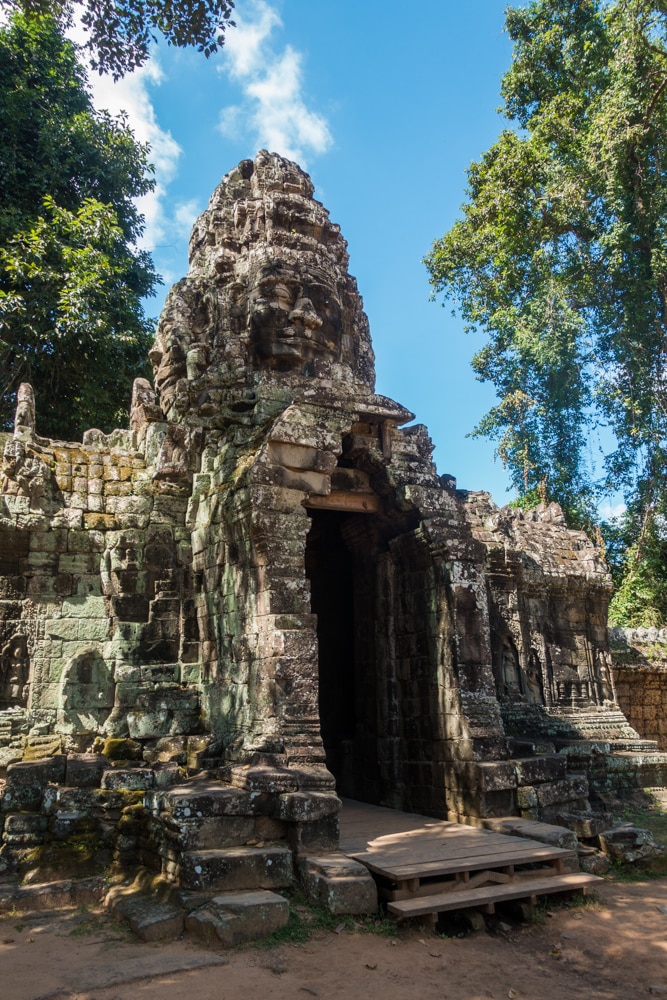
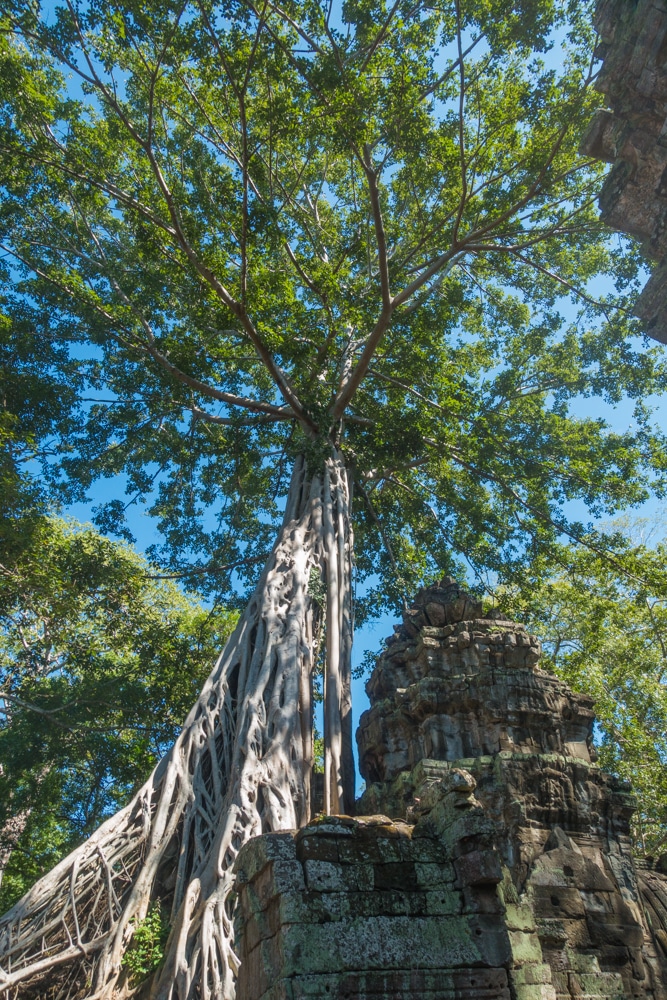
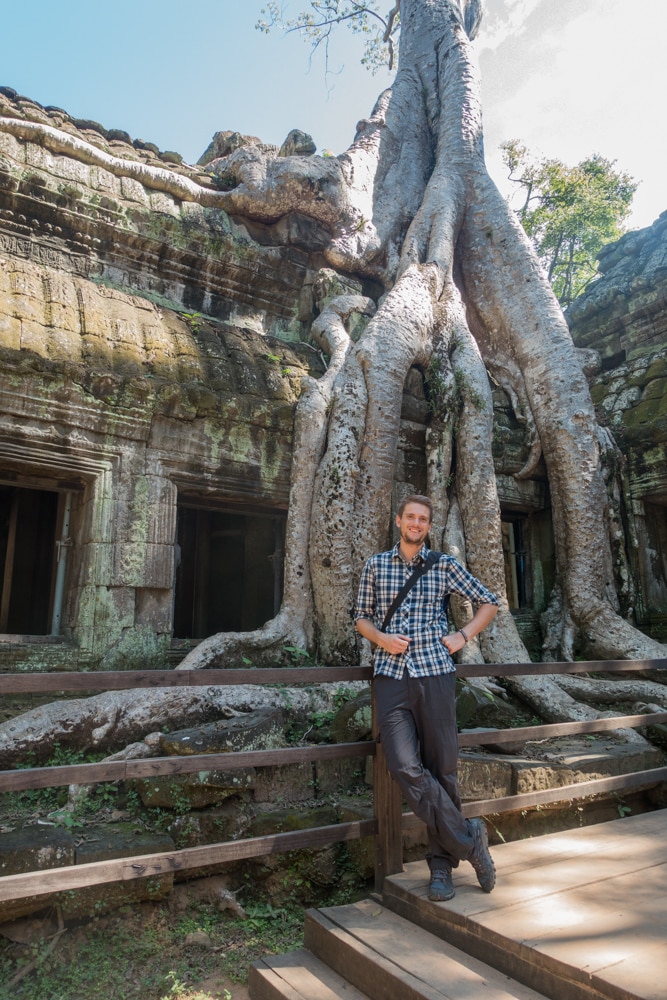
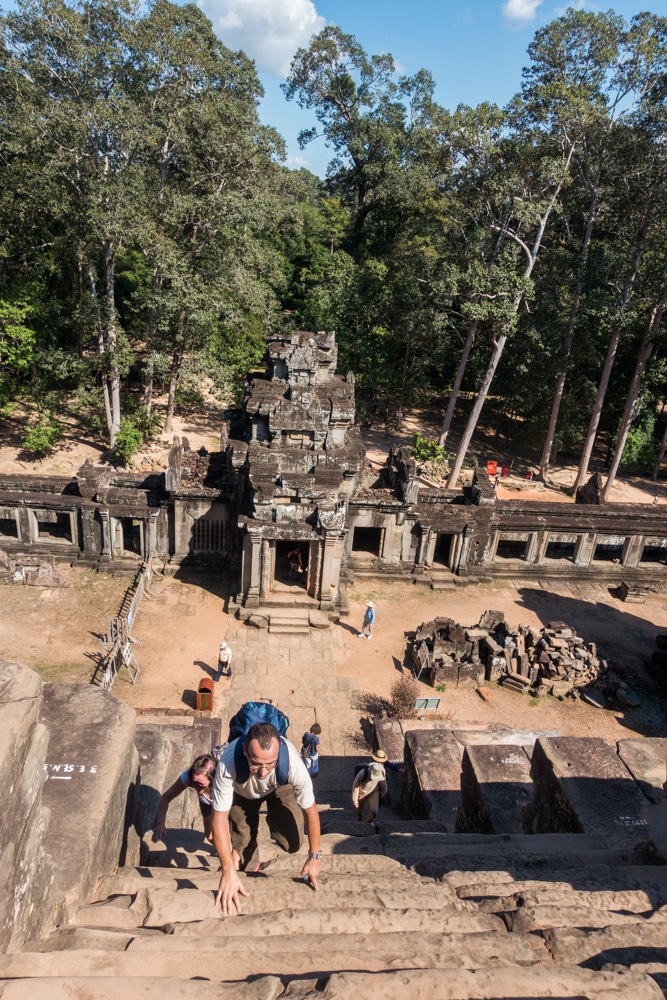
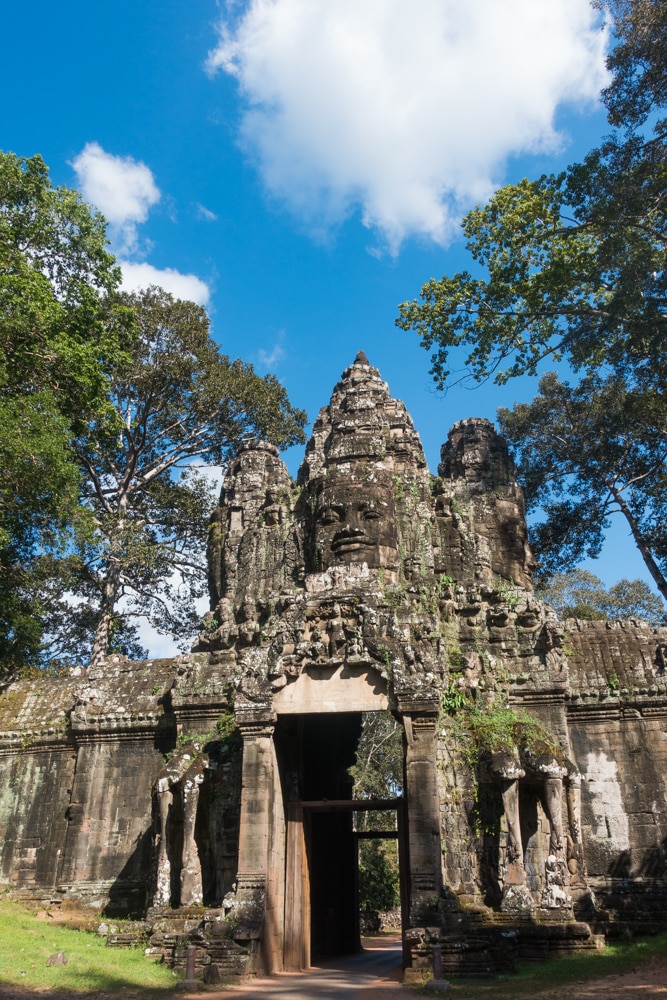

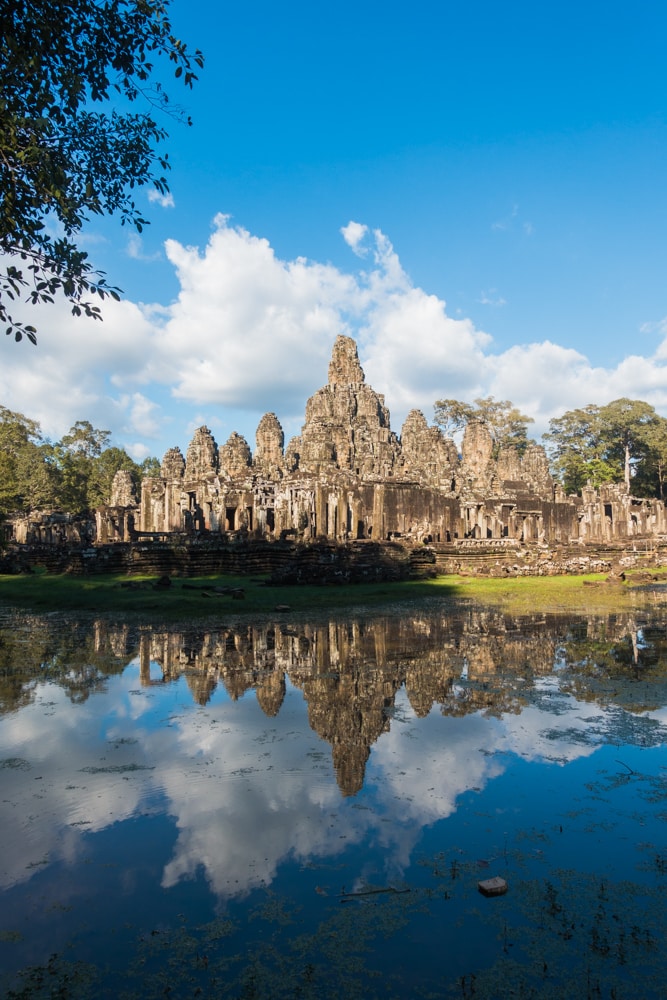

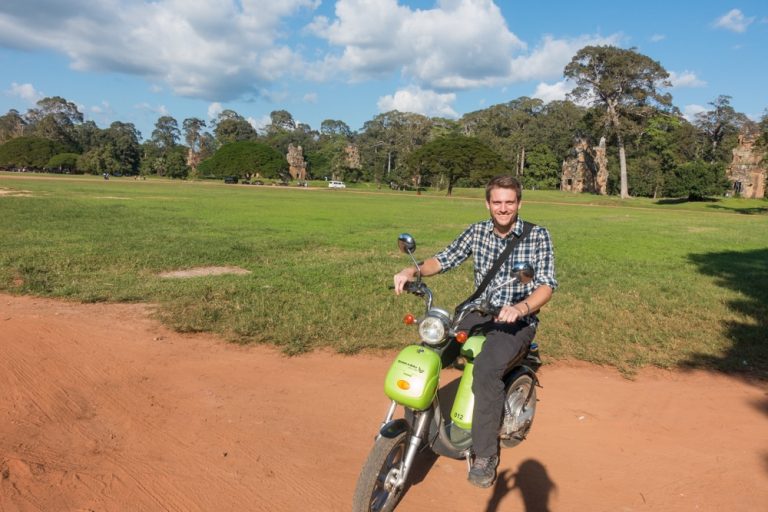
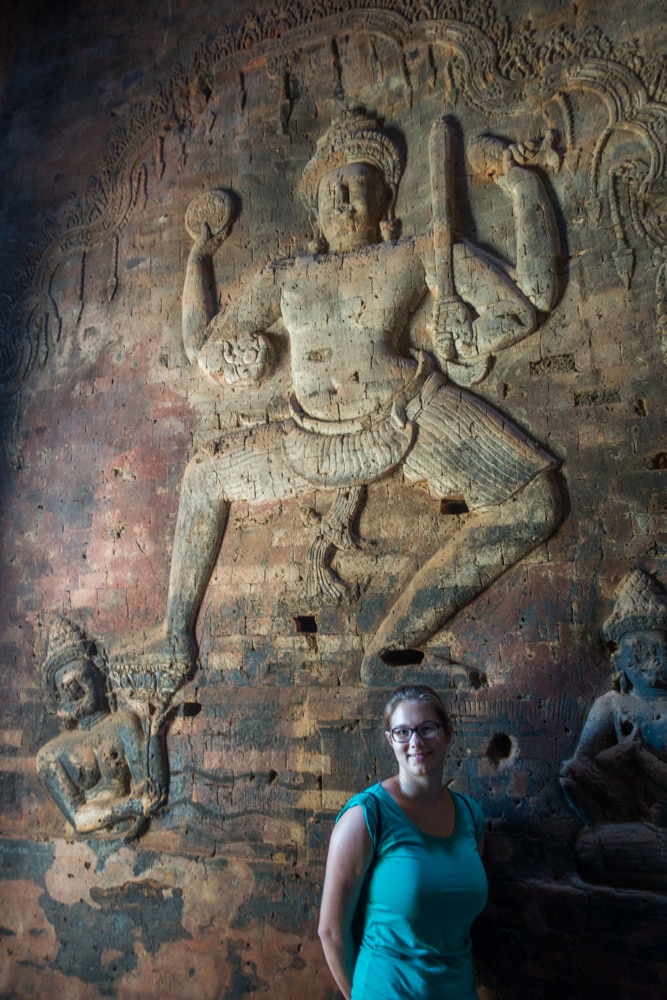

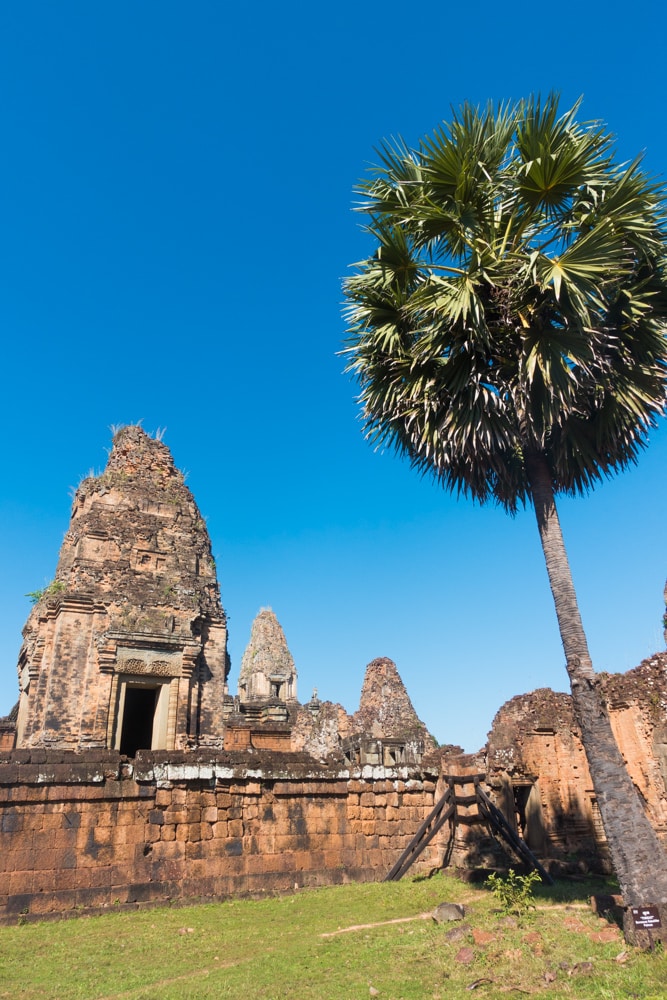

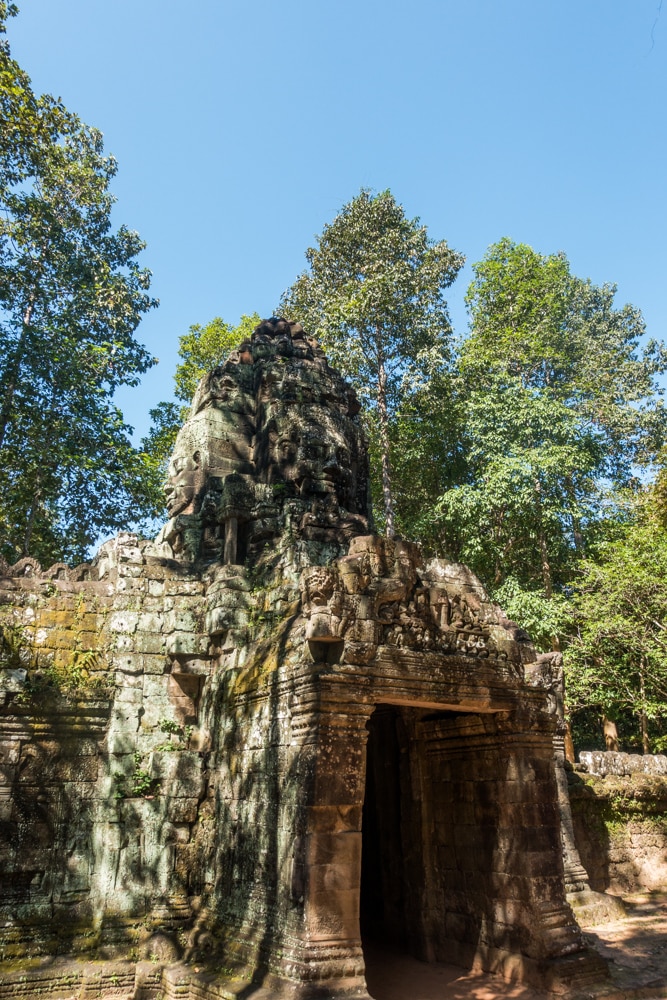
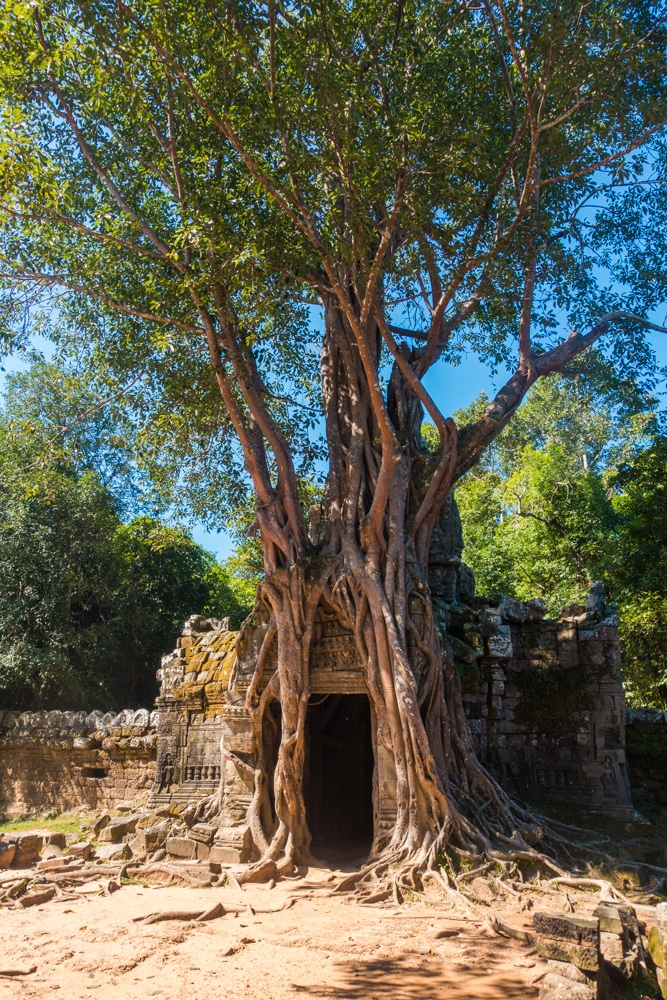

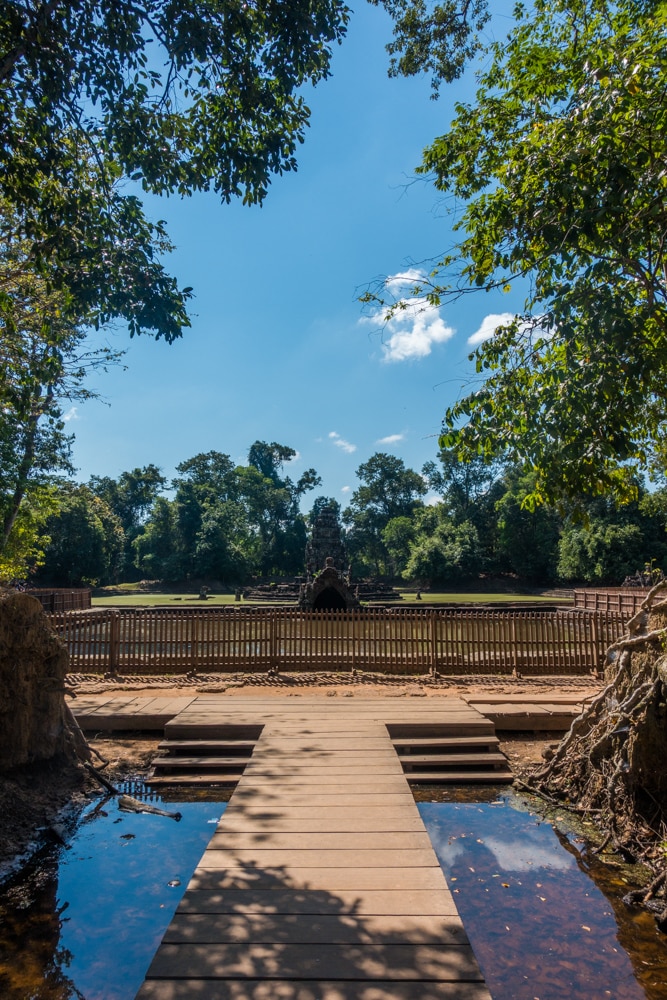












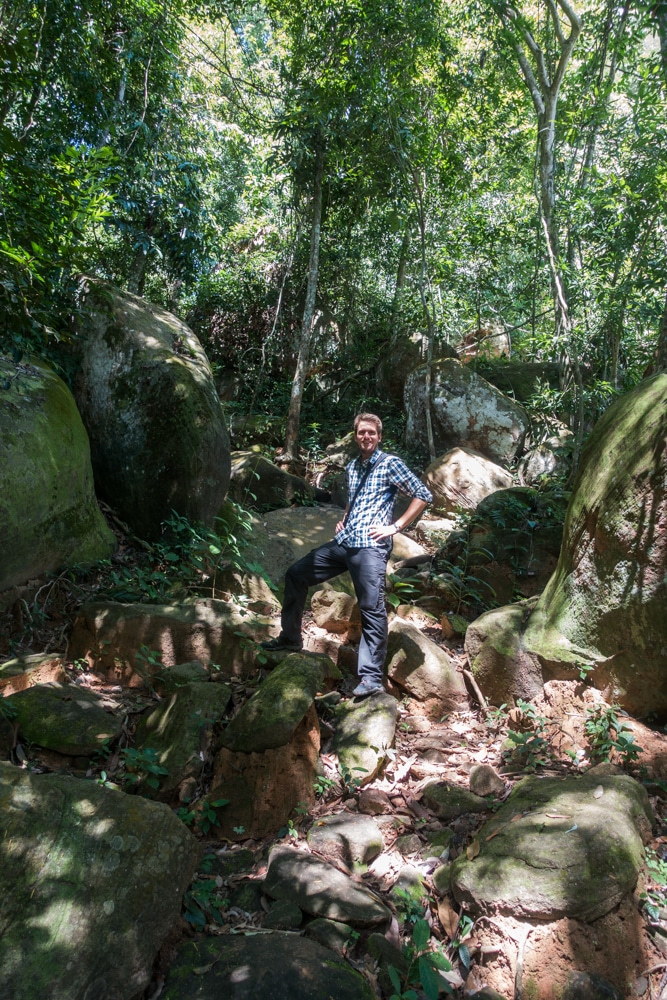
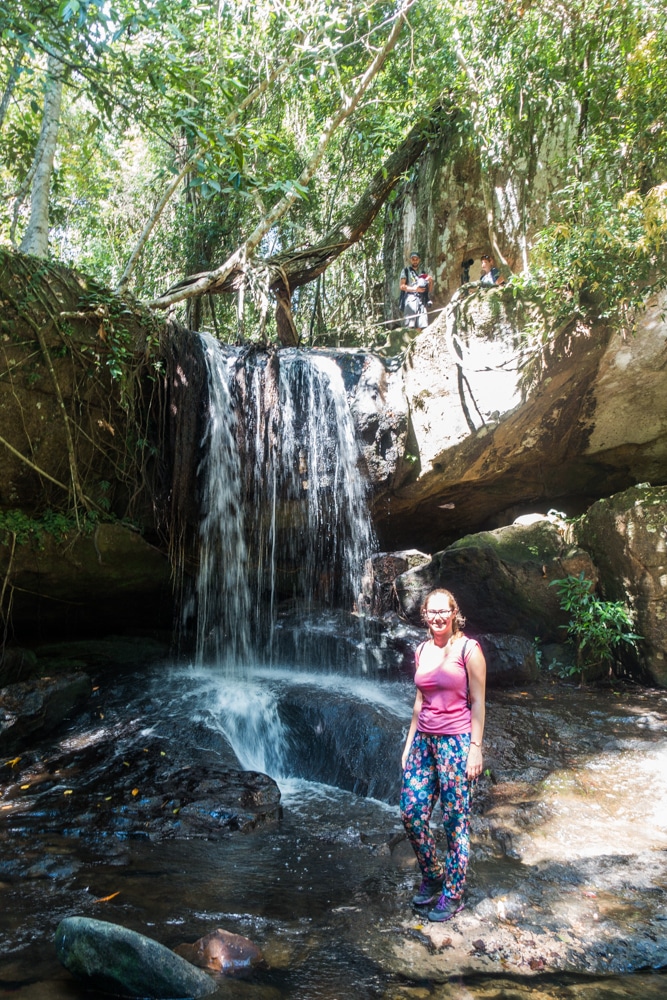


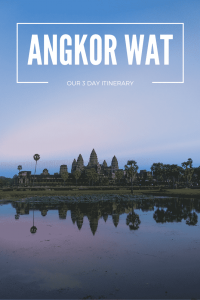
Zoveel mooie foto’s! Heb het gevoel dat ik niet hoef te gaan, alles gezien door jullie ogen…
Hi Birthe
very well organized post!!;)
can i ask you some informations to can organize my 3 days?
1) on the day0 you bught the ticket and went to see ONLY the sunset, but you didnt entered the area and started to use your 3 days ticket right? so the 3 days start the day after
2) i have less time (3 days but 1 day i should get ready around 10.30) so i am thinking to add in the 1 morning the trip at 11.00 to go to see only Banteai Srey, and the to go to see only the sun set (your day0)
Banteai Srey is included into the 3 days ticket or have a ticket apat?
if yes, i suppose that i first need to go tu buy the ticket, then i can go to Banteai Srey
3) on the 2 day you sad you used a tuk tuk for 25USD , but the cost was for “go and come back” and the driver were waiting for you or you took 2 different tuk tuk ?
4) we are thinking to use only tuk tuk but , it is possible to rent the e/bike for 2 consecutive days?
thank you:)
Thanks, Alessandro!
1) Maybe my explanation in the post wasn’t that clear. So when you buy your entrance ticket between 17:00 and 17:30, you can enter the Angkor Archeological Park for free at that moment (for example to see the sunset). So your ticket is valid for entrance at the moment you buy it (between 17:00 and 17:30) and three days in the week to come (if you buy a ticket for 3 days of course).
2) You only need one ticket to be able to visit all the temples in the Angkor Archeological Park, including Banteay Srei. Keep in mind that it’s quite the trip to Banteay Srei, as you can see on the map in the sidebar.
3) Angkor Archeological Park is huge, you can’t walk from one temple to another. So if you decide to rent a tuktuk, there are tons near your accommodation. Pick a driver (there are tuktuks with a cooler) tell him where you want to go, negotiate a price, and he will be your personal driver for the day, taking you to wherever you want.
4) A tuktuk is indeed convenient, because those drivers know the park, driving tourists through it every day. And it’s not expensive at all. You can rent the e-bike for as long as you want, just ask for information at one of their shops. Do keep in mind that you need to charge them at least every 30-35km and there aren’t that much charge points in Angkor. We have another blog post about the e-bike, if you’re interested: https://wandering.world/exploring-angkor-wat-with-a-green-e-bike-in-siem-reap/
Hope that answers your questions! If you have more, don’t hesitate to ask!
yes !!
thank you very much!:)
Hi. Does the 3 day pass cover all the temples you mentioned? I have only 2 days and your first 2 days sound perfect to me. Should i buy 2 separate day passes? Please suggest
Hi Ketki. The 3 day pass indeed covers all the temples we mentioned in this post. The entrance ticket prices were increased recently. A day pass now costs $37, and a 3 day pass $62 if I’m not mistaken. In that case it’s cheaper to just buy a 3 day pass, even if you just have 2 days to visit Angkor.
Enjoy your visit!